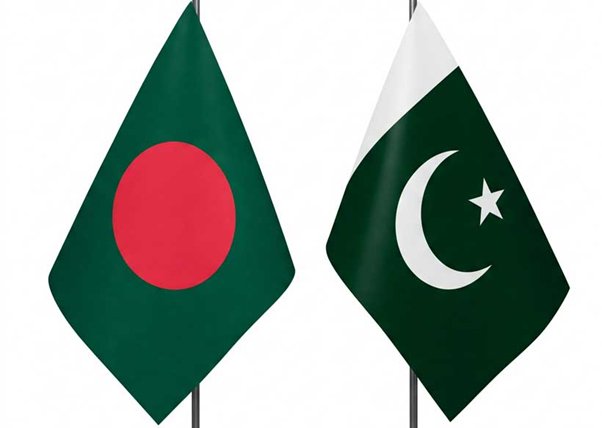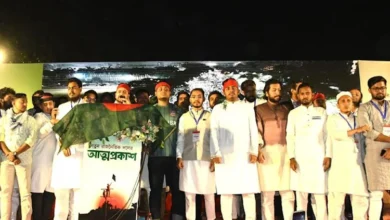Reconciliation and Realism: Navigating Bangladesh-Pakistan Diplomatic Defreeze

After a fifteen-year hiatus, the resumption of formal diplomatic engagement between Bangladesh and Pakistan represents a significant recalibration of South Asian geopolitics. The sixth round of Foreign Secretary-Level Bilateral Consultations held in Dhaka on April 17, 2025, signals a mutual recognition of the need to move beyond historical tensions toward practical cooperation. While the talks covered extensive ground across economic, strategic, and cultural domains, the careful diplomatic language employed by both sides reveals the complex balancing act required to address unresolved historical issues while pursuing contemporary mutual interests.
Economic and strategic imperatives are driving this renewed engagement, with both nations identifying tangible areas for collaboration. The resumption of direct shipping between Karachi and Chattogram, alongside planned air connectivity through Pakistani Carriers Fly Jinnah and Air Sial, demonstrates a commitment to enhancing trade infrastructure. The notable trade imbalance – with Bangladesh’s exports to Pakistan at $61.98 million against imports of $627.8 million in FY2024 – presents both a challenge and an opportunity for rebalancing economic relations. Parallel developments in security cooperation, including high-level military exchanges and intelligence sharing mechanisms, indicate a willingness to build trust at the institutional level while addressing shared regional security concerns.
The dialogue’s most sensitive dimension remains the unresolved legacy of 1971, which continues to shape the diplomatic parameters of this relationship. Bangladesh’s consistent position regarding a formal apology, financial reparations estimated at $4.52 billion for pre-1971 assets, and the repatriation of stranded Pakistanis represents fundamental requirements for Dhaka. While Pakistan’s Foreign Office acknowledged these issues were discussed, their omission from the official statement reflects Islamabad’s cautious approach to these politically and economically sensitive matters. This diplomatic formulation allows space for continued dialogue while avoiding premature commitments that could have domestic political repercussions or immediate financial implications for Pakistan’s $15.75 billion foreign reserves.
Historical precedent suggests potential pathways for reconciliation, notably the 1974 tripartite agreement, where Pakistan expressed “deep regret” for wartime excesses. This carefully negotiated language created sufficient political cover for prisoner repatriation and Bangladesh’s subsequent entry into SAARC, demonstrating how calibrated diplomatic formulations can bridge seemingly intractable positions. Contemporary parallels might involve phased confidence-building measures – perhaps beginning with joint historical research initiatives, memorialization projects, or educational exchanges addressing the 1971 period, creating an environment conducive to more substantive reconciliation measures over time.
The strategic calculus for both nations extends beyond bilateral relations, with significant implications for regional power dynamics. Pakistan’s outreach aligns with its broader efforts to diversify regional partnerships amid evolving geopolitical equations, while Bangladesh seeks to maximize its strategic autonomy in an increasingly multipolar regional environment. Their mutual endorsement of SAARC revitalization challenges the organization’s current stagnation, potentially creating new avenues for regional cooperation that transcend traditional alignments. The developing security cooperation between Dhaka and Islamabad may also influence the strategic calculations of other regional actors, particularly given the changing political landscape in Bangladesh following the 2024 transition.
The path forward requires nuanced statecraft that acknowledges both the imperative for reconciliation and the practical constraints of realpolitik. Incremental progress may be achieved through parallel tracks – advancing economic and technical cooperation where interests align immediately, while establishing dedicated mechanisms to address historical issues through sustained dialogue. Third-party facilitation from neutral actors could help bridge remaining gaps, particularly regarding formulating mutually acceptable language on historical accountability. The upcoming visit of Pakistan’s Deputy Prime Minister presents an opportunity to institutionalize this dual-track approach, potentially by establishing working groups on specific cooperation areas alongside a high-level historical dialogue commission.
The ultimate test of this diplomatic reengagement will be its ability to deliver meaningful progress on contemporary cooperation and historical reconciliation. While economic and security collaboration can develop relatively quickly, the relationship’s long-term stability will depend on addressing the fundamental asymmetries in how both nations remember their shared past. Pakistan’s willingness to engage with these difficult questions, even incrementally, and Bangladesh’s capacity to balance principled positions with pragmatic diplomacy, will determine whether this thaw develops into sustained normalization or remains constrained by unresolved historical baggage. The international community, particularly regional partners invested in South Asian stability, will watch closely as these complex negotiations unfold in the coming months.
This delicate diplomatic process represents more than bilateral rapprochement – it offers a potential case study in how nations can navigate the intersection of historical justice and contemporary realpolitik. The choices made by both governments in the next phase of engagement will reveal much about the possibilities and limitations of reconciliation in post-conflict international relations, with implications that extend far beyond the subcontinent.






